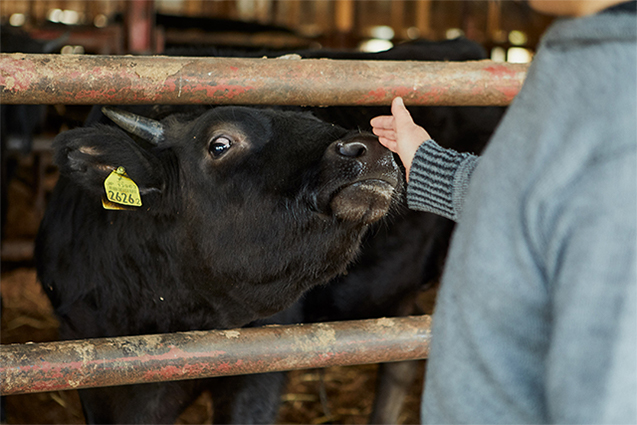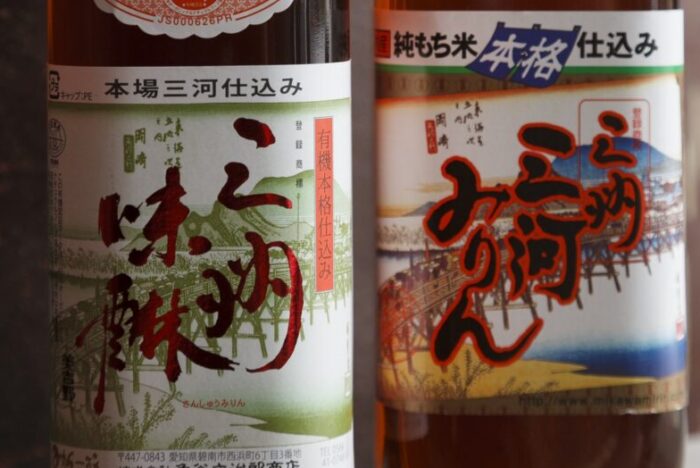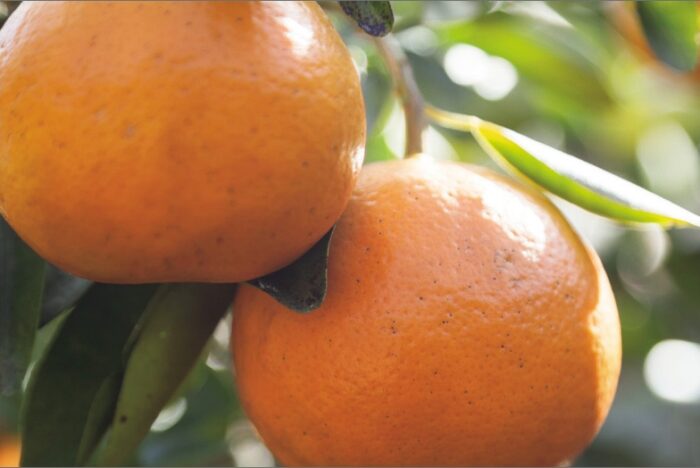Japan [Yamagata]
Finding the meaning of life in the mountain of Yamagata
2021.03.08

When we arrive at Farm Red & Green after lunch on a sunny November afternoon, all is quiet, save for the rustling of new-born calves shifting position on a bed of straw. We have to whisper because it’s nap time for Norie Endo’s herd of sweet-faced cows. The bells that hang around the animals’ necks make hollow, intermittent clicking sounds as a cluster of young cows survey us with curious eyes, their soft black muzzles inching forward to solicit a pat on the nose.

“We choose cattle that display docile temperaments and are comfortable around humans,” she says, as one of the cows unfurls its long pink tongue and licks her hand like a pet dog.
The Japanese expressions ikigai and hatarakigai are both related to a sense of purpose – the first conveys a life worth living, while the second refers specifically to the meaning one can find in work. For many of us, work is a means to an end. But for the producers and purveyors I met in Yamagata, work is more than a job: It’s a vocation that melds the concepts of ikigai and hatarakigai.

Farm Red & Green is a family business. Together with her husband and their son, Endo grows sweet and succulent strawberries in two hothouses, along with around 50 kinds of vegetables in lush fields surrounding the ranch. She explains that they practice closed-loop agriculture, using compost made from cow manure to fertilize the crops, cultivating pest-resistant varieties, and nurturing garden plants that have repellent properties. In addition to raising cattle, the Endos keep a coop of fluffy chickens – including a boisterous rooster they rescued – and a blue-grey cat who stands sentry by the front door.
“We’re lucky that we can work together as a family,” she says. “Maybe it’s fate.”
◎Farm Red & Green
Facebook page
Some of the region’s producers are motivated by a pioneering spirit to create something new. Prior to the founding of Tendo Wine in 1984, there were no wineries – and scant knowledge of wine – in Tendo. However, the town is situated in the east-central portion of the Yamagata Basin, an area that receives little rainfall during the flowering season but long hours of sunshine during the harvest.
“The region has an ideal grape-growing climate, similar to parts of France,” says CEO Masahiro Sato.

The winery uses Yamagata grapes grown on steep mountain slopes, focusing on French varietals such as Merlot and Chardonnay, as well as table grapes such as Niagara.
Sato has direct contracts with a handful of trusted growers who share his commitment to terroir and quality. Every year, he talks closely with them about the coming harvest to adjust his process in the cellar.
“70 percent of winemaking takes place in the vineyard,” he says, noting that the region’s snowy conditions can make the work particularly grueling. “But we all understand that we have to put in the effort in order to make good wine.”
◎Tendo Winery
http://www.tendowine.co.jp/
Others are carrying on traditions for future generations. One of the largest tourist-friendly orchards in the region, Ohsyo Fruits Farm was established in 1969, specializing in cherries, grapes , apples and luscious La France pears. The primary focus, however, is on agritourism. From spring to autumn, Ohsyo welcomes visitors to experience fruit picking. Mid-June marks the start of cherry harvest.“People from large cities have come for up to a month, helping us with different harvests. The experience puts them in touch with nature,” he says.

Carrying on the legacy of his father, Yoshitomo Yahagi has made it his mission to create a business that can provide stable employment and a healthy working environment for the staff. From the start of his tenure, he’s understood the need to tackle the problem of the dwindling human resources – one of the biggest problems facing Japan’s farming industry – and diversify revenue streams.

His vision includes sustainable agriculture and new product development. At the pleasant café and shop at the entrance to the farm, guests can find fresh-pressed juices, soft-serve ice creams made with cherries and La France pears, and jars of jewel-toned jams. Ohsyo has also collaborated with local producers to make wines from their Delaware table grapes and hard cider from their apples. Now, the farm is experimenting with producing cherry-blossom honey from native bees called mamekobachi.
◎Ohsyo Fruits Farm
https://www.ohsyo.co.jp/
Yamagata’s most iconic soul-food dish is imoni – taro root simmered with beef in soy sauce or miso and dashi. Every family has a different recipe. The dish is so beloved by the people of Tendo that the town hosts a massive festival dedicated to it every year. Held in September, the riverside festival features a gargantuan cauldron filled with enough imoni to feed 30,000 people.
“For us, imoni has symbolic significance. It’s a food that is traditionally made with the help of many people, intended to feed a community,” Takuya Sato explains.

He decided to grow organic taro root himself. After an encounter with an agricultural researcher from Peru, he traveled to Peru, the birthplace of potatoes. He established Sato Nouen on two large plots of land. Once the field is bare, Sato uses a hand plow to carve an outline of Tumi, an Incan god and symbol of good luck in Peru, into the ground and lays straw and grass in patterns that can be discerned from above. It’s a lot of work, but for Sato, it’s become part of a valuable project.

“Yamagata is one of the top consumers of taro root but it’s not the biggest producer by far. Taro root is considered a luxury, in here” Sato says. “I want us to continue to enjoy it for the next hundred years.”
◎Sato Nouen(taro root farmer)
https://satou-nouen.co.jp/









